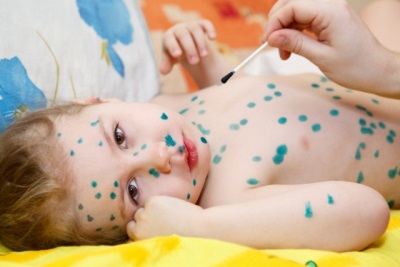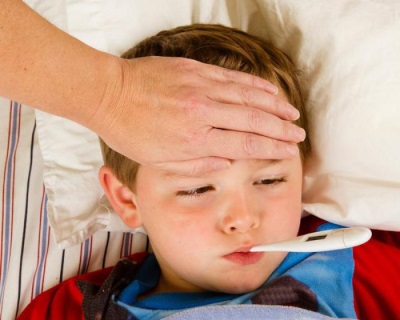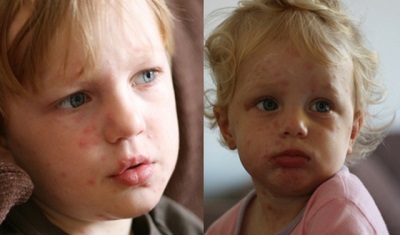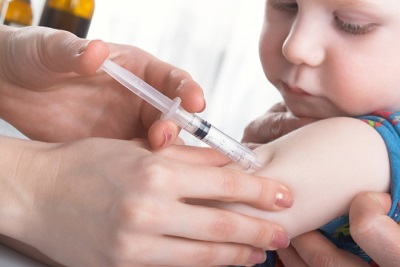Are chicken pox and rubella the same thing or not?
Among all childhood infections, chicken pox and rubella are among the most contagious. Since children are very susceptible to their pathogens, these diseases are called volatile. The group of such infections, which are easily transmitted to people without immunity, also include measles.
When a baby has a fever and a rash appears, it is very important to determine which disease has provoked these symptoms. However, some parents confuse chickenpox with rubella, and sometimes consider them as one disease. Let's find out if chickenpox and rubella are the same or not, and also find out if there is a difference between these infections and how you can protect a child or an adult from them.
Similar signs
Chickenpox, commonly called chickenpox, and rubella are completely different diseases because they are triggered by different pathogens. and have differences in the clinical picture. However, they also have some similarities:
- Both rubella and varicella are viral infections.common in childhood. They are diagnosed mainly in children up to 10 years.
- The main mode of transmission of both diseases is airborne. Also, both pathogens can be transmitted from the pregnant woman to the fetus.
- Both the rubella virus and the chickenpox pathogen are distinguished by low resistance to external factors such as ultraviolet, high temperature, disinfectant treatment.
- Most sick babies have both rubella and chickenpox running easily., but there are also severe cases with serious complications, as well as erased forms.
- Both chickenpox and rubella occur with fever and a skin rash.. Both diseases are characterized by complaints of weakness, headaches, lethargy, poor appetite, worsening of sleep.
- Both diseases leave behind an immunity that lasts until the end of life.
- Both of these infections pose a danger to the fetus, especially if the expectant mother is infected in the first trimester.when the baby's body is only formed (in the first 12 weeks of pregnancy).
- In most cases, these diseases are treated symptomatically, for example, reduce body temperature with paracetamol or ibuprofen.
- If the mother has had any of these infections or is vaccinated against her, baby of the first six months of life will receive immunity due to maternal antibodies.
?
We recommend watching the video of Dr. Komarovsky’s program on chickenpox:
Differences of chickenpox and rubella
There are many differences between chickenpox and rubella:
Chickenpox | Rubella |
The causative agent is one of the viruses of the herpes group - DNA virus Varicella Zoster. | The causative agent is a representative of the Togavirus - RNA-containing virus Rubella virus. |
Period of contagion begins on the last day of the incubation period and ends 5 days after the last vesicles appear on the skin. | The infectious period begins a week before the rash occurs and ends 2 weeks after the onset of the disease. |
Incubation period Lasts from 7 to 21 days, and the average for children is 2 weeks. | The incubation period lasts from 15 to 24 days, and on average is 3 weeks. |
The body temperature of a sick child often rises to high numbers. | Temperature increase in most cases moderate. |
A rash appears on the first day of the clinical symptoms at the same time as the fever. | A rash occurs 2 days after the first symptoms of discomfort. |
The elements of the rash gradually change - first they lookas spots, then become papules and eventually turn into single-chamber vesicles, which are quite itchy. | The rash is represented by non-itchy oval pink spots of up to 3 mm. |
The first spots appear on the body, and then - in the head and on the limbs. | The first elements of the rash appear on the face, and then quickly "fall" below - on other parts of the body. |
Within 2–9 days, new elements of the rash appear - while some blisters begin to heal after being crusted, new rashes can develop nearby. | The duration of the period of rash - 2-4 days. New elements do not appear, and all the spots disappear, leaving no peeling and pigmentation. |
Blistering rash may appear on mucous membranes, for example, in the mouth. | The rash does not apply to mucous membranes. |
The rash should be treated to prevent infection. | Rash can not handle anything. |
After scratching the rash remains scars. | All rashes disappear without a trace. |
Catarrhal phenomena practically does not happen. | A child develops a sore throat and a runny nose. |
Cervical lymph nodes may increase. | Mark an increase in all lymph nodes. |
Prevention
The most effective protection against chickenpox and rubella virus is considered vaccination. At the same time, rubella vaccination is among the mandatory ones, and the issue of chickenpox vaccination is decided by parents and doctor individually.
Rubella is vaccinated against all babies at 12 months and revaccination at 6 years of age. Additionally, girls are vaccinated against rubella at the age of 13, if they have not been ill before or have been vaccinated at an early age once.
Chickenpox can be vaccinated at any age over 9 months. At the same time, if the child has not yet turned 13, a single vaccine injection is enough, and adolescents over the age of 13 require two injections.
Many parents ask if they have chickenpox, can they get rubella, or if they have been vaccinated against rubella, will it protect them from chickenpox? For the right answer you need to remember that the causative agents of these infections are different, so the presence of immunity to chicken pox does not mean that a person is protected from rubella, and vice versa.
If a child is found to have a disease, prophylactic measures protecting chickenpox or rubella against healthy children should be:
- Isolation of a sick baby for the entire period of infectiousness.
- Allocation of individual hygiene items to the child.
- Frequent airing of the room and its wet cleaning.
Watch the informative video in which E. Malysheva and his guests find out how to avoid the dangerous effects of rubella:













